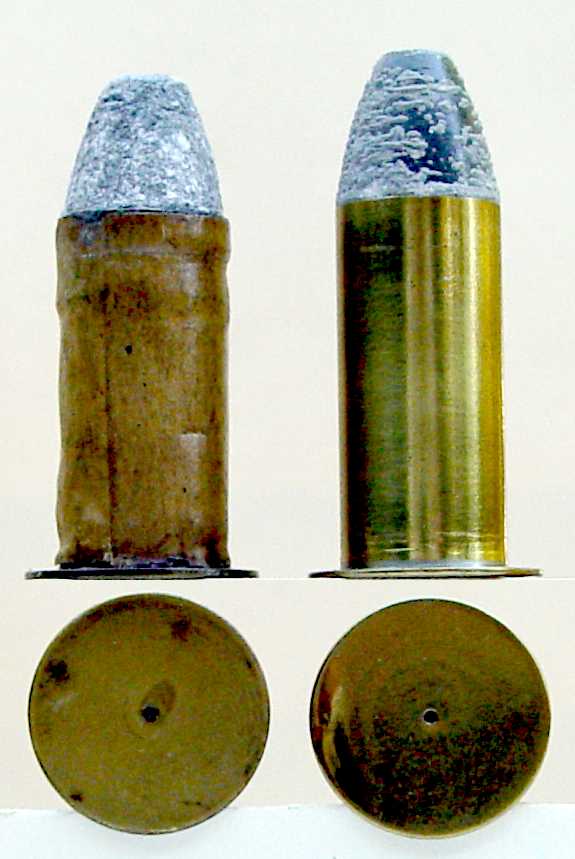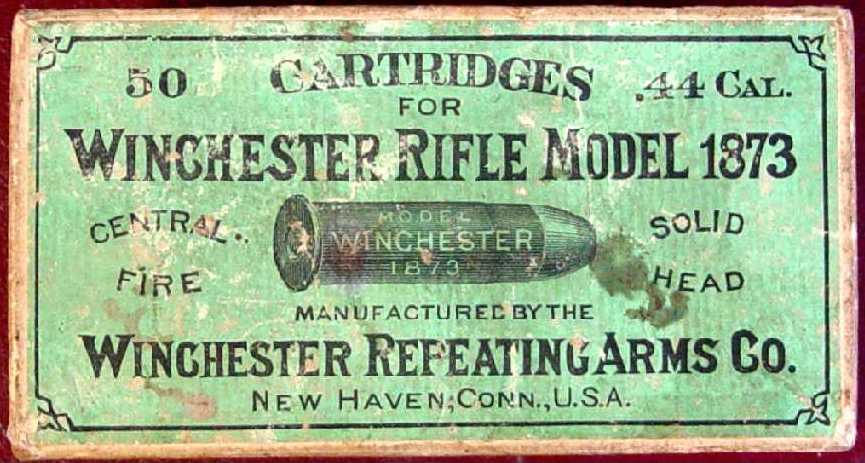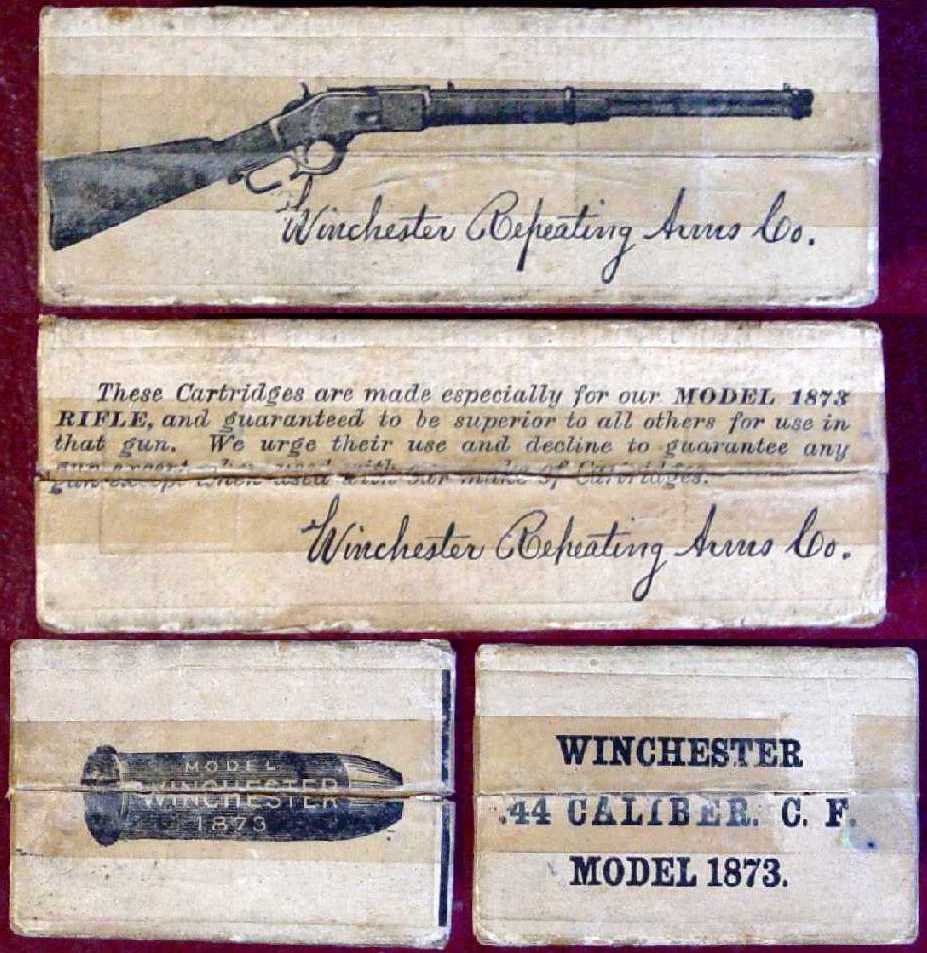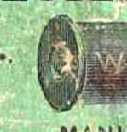|
THE CARTRIDGE COLLECTOR'S EXCHANGE |
| Contents
Cartridge
Lists
Prior Picture Pages:
Links to Other Sites
Cartridge Collectors Organizations:
Auctions:
Books:
Other Collector's Sites: |
Home of the Old Ammo Guy's Virtual
Cartridge Trading Table Featuring a wide range of antique, obsolete, and modern ammunition for collectors Picture Page January 2008 An unlikely candidate for a paper-patched bullet...
The .303 cartridge was introduced commercially with the Savage Model 1895 lever-action rifle. This rifle, initially developed as a potential military firearm by A.W. Savage, was made in limited numbers and was the forerunner of the highly successful Savage Model 1899 rifle, which was also chambered for the .303 Savage. The cartridge was produced with a number of different bullets early on in its existence, including a variety of full metal jacketed and metal jacketed soft points that would be expected in a smokeless load, as well as light weight, short range lead bullets loaded in the 'miniature' line of cartridges, which were produced in black powder as well as smokeless loads. A check of the ammunition companies' early catalogs reveals that at least two produced the .303 Savage with a paper patched bullet, these being the Union Metallic Cartridge Company and the Savage Repeating Arms Company. While my limited group of catalogs is lacking one from Savage, I do have a couple that include UMC's paper patched variation. The first is the 1904 UMC price list, from which page 24 is shown here, which lists a 185 grain paper-patched .303 Savage load. Written in black ink throughout the list is the retail price per box for most of the items. Note that a box of .303 Savage cartridges sold for 65 cents in 1904. This price list has 'H. K. White hand-written on the front cover; I assume this was the name of a retail goods company although it could just easily have been the name of an individual who owned the price list. There was a Harry K. Wright from Maryland who held an 1895 patent for a magazine rifle; perhaps it was owned by him.
. . . . . . . . Another catalog that I have that lists a paper-patched load for the .303
Savage is one that was distributed around 1907 by C. J. Godfrey & Co, a
sporting goods company in New York City. The portion of the
page showing the .303 Savage cartridge is shown below. It would appear that
the price of the paper patched cartridges remained at $.65 per box of 20, or
$3.25 for 100. The
. . A couple of variations of the .50 Maynard M 1865...
Here are two variations of the .50 Maynard Model 1865 cartridge. On the right is the soldered two-piece brass case type, which is one of the more common Civil War cartridges found. The one on the left has a rolled paper and brass foil case. Cartridge cases constructed in this manner were thought to provide a better gas seal upon firing than drawn brass cases like the one on the right in the picture. They were often packed in boxes that indicated they were made under Poultney's patent of December 15th, 1863. This patent (#40988) was actually issued to Thomas Rodman and Silas Crispin, and assigned to Thomas Poultney, who was in business with David Trimble under the name Poultney, Trimble & Co. They were the sales agents for Smith carbines, which should account for the paper and brass foil construction of the Smith cartridge.
. . An early box of Winchester .44-40 cartridges.....
Here's a really nice Winchester .44-40 box that I had the opportunity to
look at closely at our local gun show recently. This box with the cartridge
illustrated on the top label and the Winchester Model 1873 carbine on the
side sealing label is considered to be the third style box made by
Winchester Repeating Arms Company for their .44 center fire cartridges. This
style box was first produced in about 1880, and will be found with a number
of variations that were incorporated during its nearly 20 years of
production. One of the more obvious
. .
|



 changes
was to the words 'Central Fire' on the top label, which became 'Center Fire'
towards the end of production of this box style in the late 1890s. Less
apparent are a couple of changes that were made to the carbine on the side
label. In its original form, it included a barrel band just ahead of the
front sight, and was equipped with a rifle rear sight, as can be seen in the
picture of the carbine from this box. Some time later, the barrel band was
omitted, and the rear sight was changed to a carbine sight. An easily
overlooked characteristic of the earliest of these boxes was the lack of a
headstamp on the cartridges illustrated on the top and side labels, as is
the case with this box. In addition, the cartridge on the top label has a
noticeably longer bullet than is typically found on these boxes. The
cartridges in the box are quite early, as they are also unheadstamped.
changes
was to the words 'Central Fire' on the top label, which became 'Center Fire'
towards the end of production of this box style in the late 1890s. Less
apparent are a couple of changes that were made to the carbine on the side
label. In its original form, it included a barrel band just ahead of the
front sight, and was equipped with a rifle rear sight, as can be seen in the
picture of the carbine from this box. Some time later, the barrel band was
omitted, and the rear sight was changed to a carbine sight. An easily
overlooked characteristic of the earliest of these boxes was the lack of a
headstamp on the cartridges illustrated on the top and side labels, as is
the case with this box. In addition, the cartridge on the top label has a
noticeably longer bullet than is typically found on these boxes. The
cartridges in the box are quite early, as they are also unheadstamped. 